Korean national costume
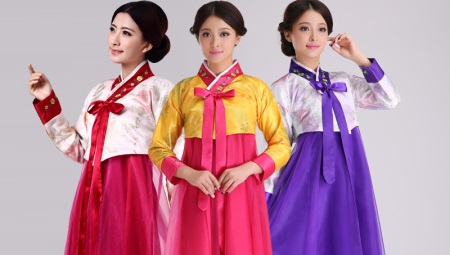
The Korean national costume is called hanbok, and in North Korea it is called chosonot. In the modern world, it is quite rare on the streets. However, on the catwalks of Korea now and then there are these traditional outfits with their smooth and clear lines, varied and charming colors and painstaking artistic embroidery motifs.

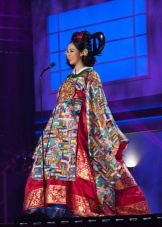
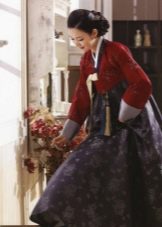
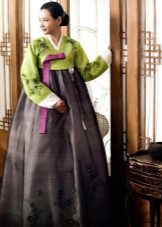
The creation of hanbok occupies a distinct place in the modern Korean fashion industry.

Men today rarely wear traditional costume, which cannot be said about women. Paying tribute to traditions, representatives of the beautiful half of humanity choose hanbok as a solemn dress.
The national costume is an obligatory attribute for many important events, including weddings and other family celebrations, as well as national holidays. Therefore, in the wardrobe of all Korean women, there will definitely be at least one female costume of the Korean people.
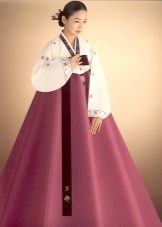

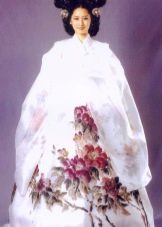
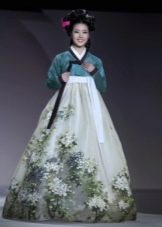
Characteristic features of the Korean national costume
Since its inception, the Korean national costume has changed more than once. Today the hanbok is sewn after the pattern that appeared during the reign of the descendants of the Joseon family, who ruled for 500 years. The costume is based on the canons of Confucianism.
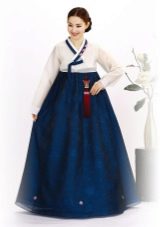
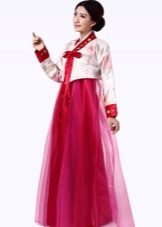

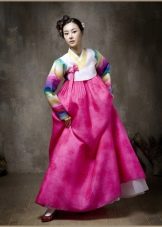
Female hanbok
The main components of a suit for women are a rather loose and long wrap skirt called chima and a jacket called chogori.

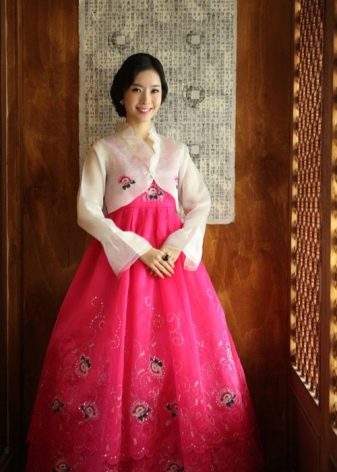
A traditional skirt can have one or two layers, and it can also be made of quilted fabric for the cold season. A distinction is also made between skirts with a wrap located in the back and one-piece skirts. Elegant women's jackets are distinguished by their short length and are characterized by roundness of lines and the presence of decorative elements in the form of embroidery.
It is believed that earlier women's hanbok jackets were so short that they did not cover their breasts. However, Koreans in every possible way refuse to agree with these judgments, which defame their godly people.


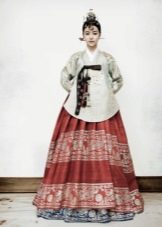
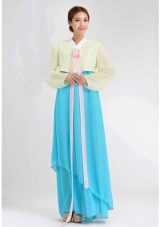
A dongjong strap is attached to the collar of the jacket, allowing you to visually stretch the neck. Open ribbons, which are attached to the jacket and hang down the length of the skirt, are also an integral part of women's hanbok. The cut of the jacket is distinguished by a special grace thanks to the pere sleeves, the lines of which resemble the roofs of Korean houses, and the whale collar.
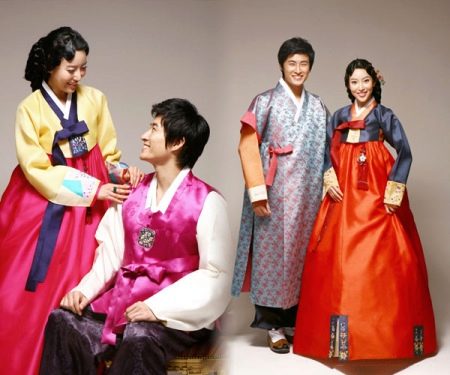
The traditional Korean outfit is characterized by a loose and fluffy cut that hides the silhouette.
There are two interpretations of hanbok:
- traditional costumes are made in accordance with historical rules;
- modern versions of national dresses, which embody the most daring design decisions.


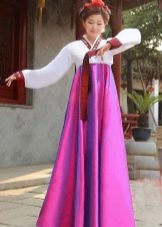
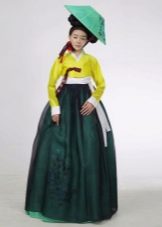
Embroidery on the costume, which used to adorn the outfits of only aristocrats, occupies a special place and is a characteristic feature of the hanbok. Embroidered floral, animalistic and other ornaments are traditionally located on the hem of the skirt and on the sleeves. Korean costume for women is complemented by white poson socks with straight seams and costin silk shoes.
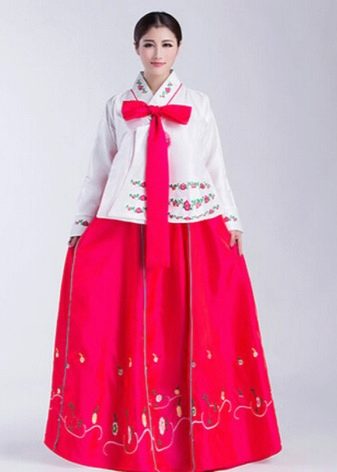

To add harmony, the shoes are also decorated with embroidery.
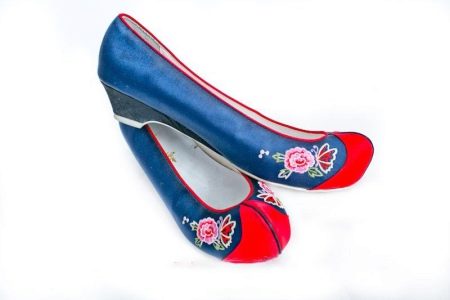
Male hanbok
The traditional male costume is characterized by the presence of an original wide-brimmed hat called cat. The main part of the costume consists of a jogori jacket, which is not as short as in the female version of the costume, and trousers called paji. A distinctive feature of these trousers is a rather loose fit, which allows Koreans to sit on the floor without feeling embarrassed.
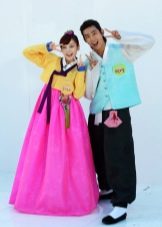

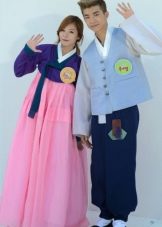
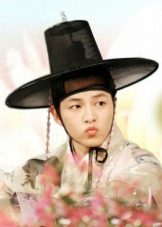
Some cases involve putting on a Korean coat called turumagi over the jacket. Men also have socks and shoes on their feet that are easy to take off and put on. By the way, it is customary for Koreans to take off their shoes indoors.
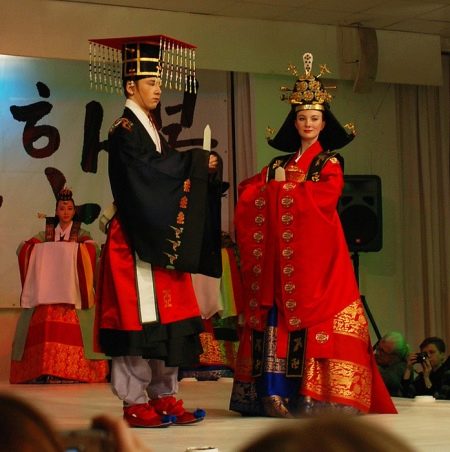
The meaning of color in the clothes of the inhabitants of Korea
The color of hanbok has always been of great importance in Korea. There are usually five primary colors used for traditional costumes.
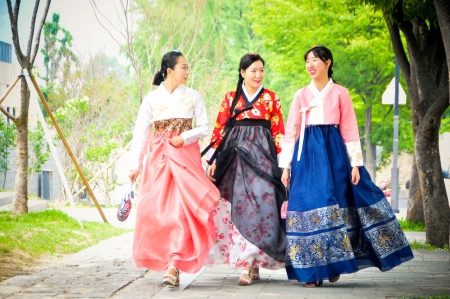
Red symbolizes wealth and well-being. The royal couple wore red robes for various ceremonies. The bride's skirt was also traditionally red and was worn with a green jacket.
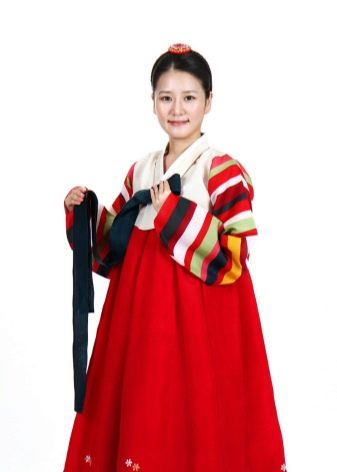
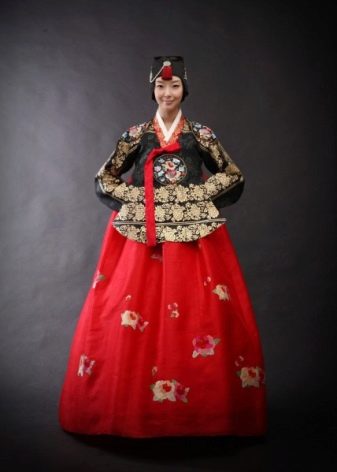
Blue means stability. Such clothes were worn by officials during working hours, as well as by the ladies of the court.
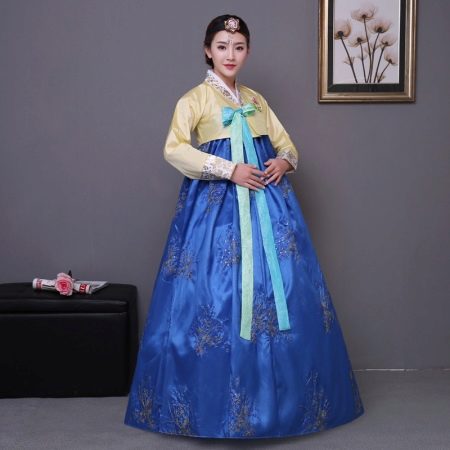
The meaning of black for the people of Korea is endlessness and creation. Hats for men are black.
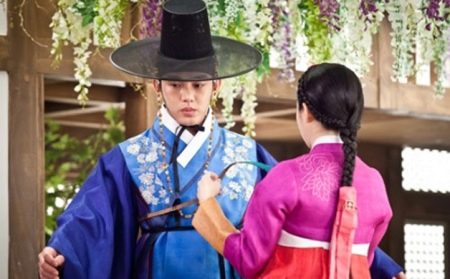
Yellow means the center of the universe. This color was associated with the king's family and was only allowed in their clothes at court events.

White was only allowed for the aristocratic class. Those who had nothing to do with the nobility were strictly forbidden to wear white clothes. For common people, only gray, black and light green hanboks were allowed.
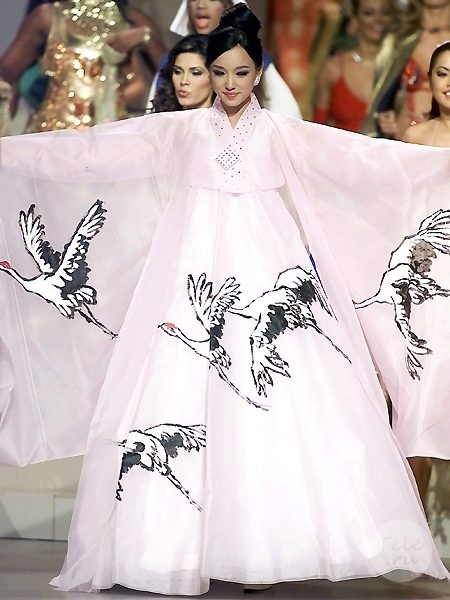
The color of the suit also played a role in determining a woman's status in society. During the wedding ceremony, the bride's attire was traditionally colored red and yellow. After the wedding, the girl changed her yellow jacket for a green one, in which she wore for a month, and in this way expressed her respect for her husband's parents.

In addition to the bride at the wedding, mothers should have a certain color of hanbok: the groom's mother wears a blue suit, while the mother of the bride is usually dressed in pink. A woman's marriage can be identified by the purple colored ribbon on the collar. The boy's mother stood out for the presence of a blue suit at the cuffs.
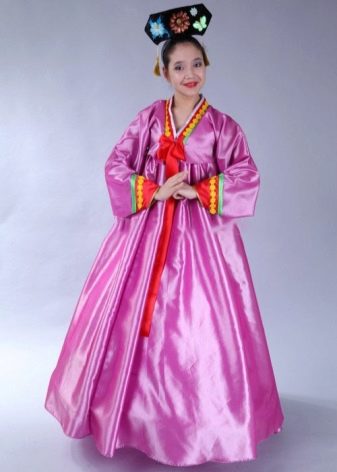
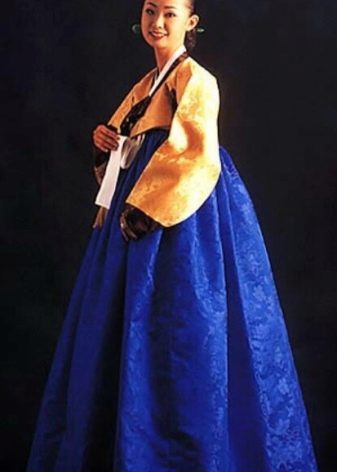
Modern varieties of the costume of the inhabitants of Korea
Since today hanbok is worn mainly on special occasions, there are several types that are characteristic of these events. Menjol hanbok refers to the festive costumes worn to celebrate the new year and for the related ceremony of honoring parents.
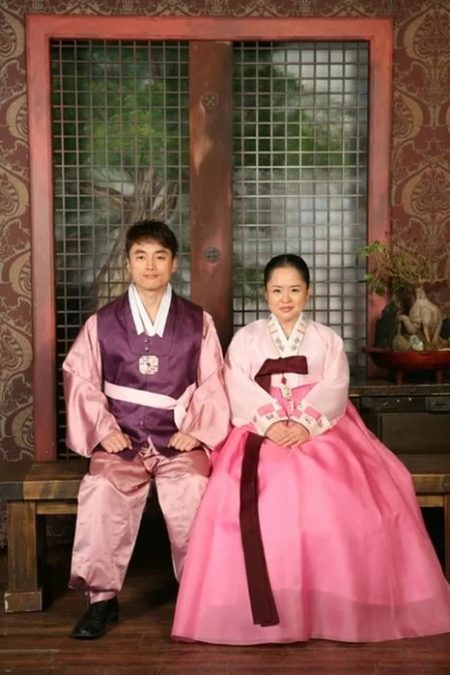
For such occasions, adults wear traditional hanbok, festive clothes for children - a jacket with multi-colored stripes and trousers or a skirt, depending on the gender of the child. On the first birthday of the child, relatives and friends come to wish health and prosperity to the baby. For such an event, a special hanbok is worn on the child.

The boy's costume for his first anniversary is a pink or blue jacket called jogori and a long blue cape called korok. The girl is characterized by an outfit consisting of a colored jacket with a strip or a festive tane jacket, which has been popular among the people of Korea for some time now.
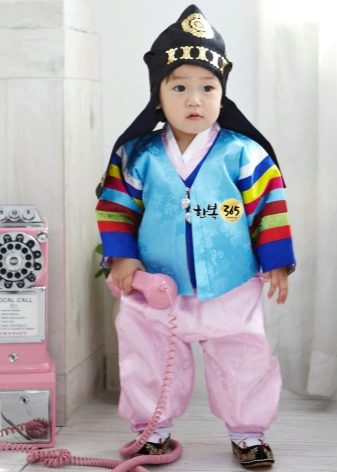
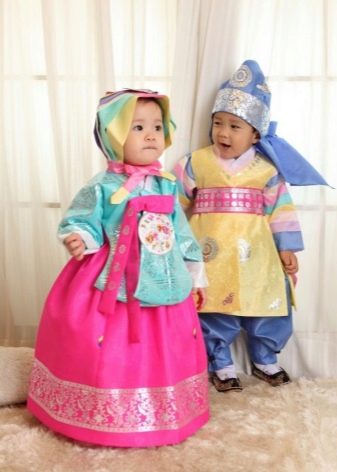
A significant event in the life of every Korean is the sixtieth anniversary of his life. For this occasion, there is a hwegap hanbok, named after a celebration organized by relatives for the hero of the day. Men on this day should wear a kyngwan chobok, for women a tane jacket is a festive dress.
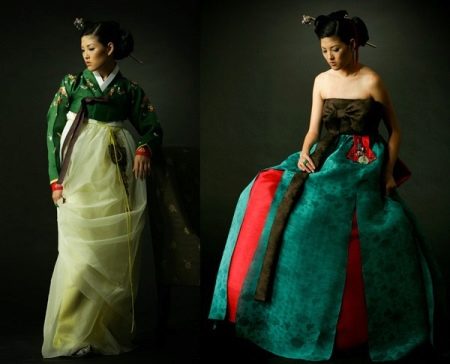
Not a single wedding, which is played in accordance with the traditions of the country, is complete without a lobby. This type of hanbok is distinguished by its special luxury. Such costumes are necessarily decorated with embroidery, hand-painted or gold.
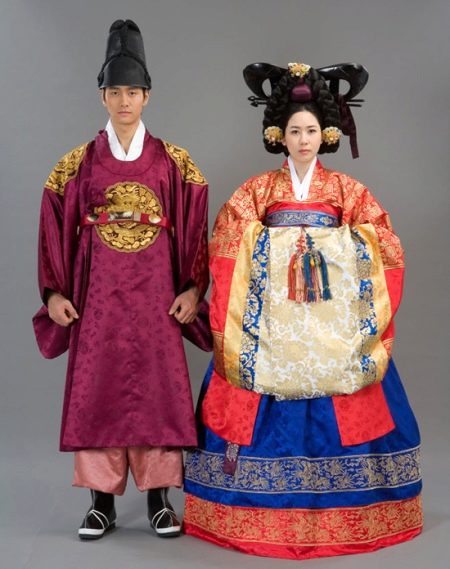
Men's wedding attire consists of the previously mentioned traditional trousers, jacket and coat, as well as a cape called magoja and a special chokka vest.
The bride wears a traditional green skirt and a yellow jacket. Over the top, she puts on a coat for women called wonsam. The girl's hairstyle is decorated with a chokturi crown.
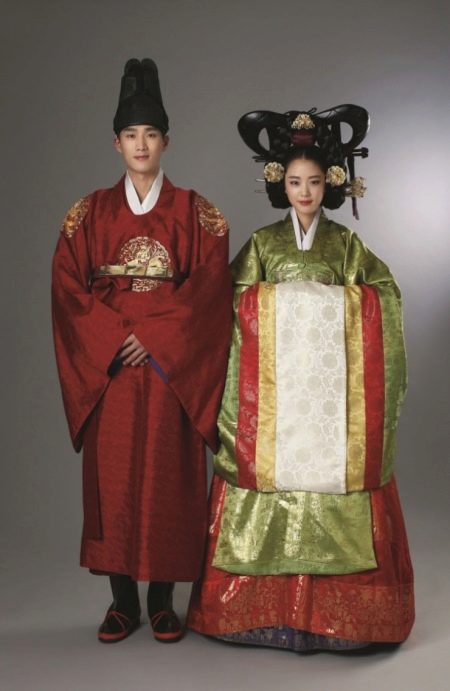









Super!